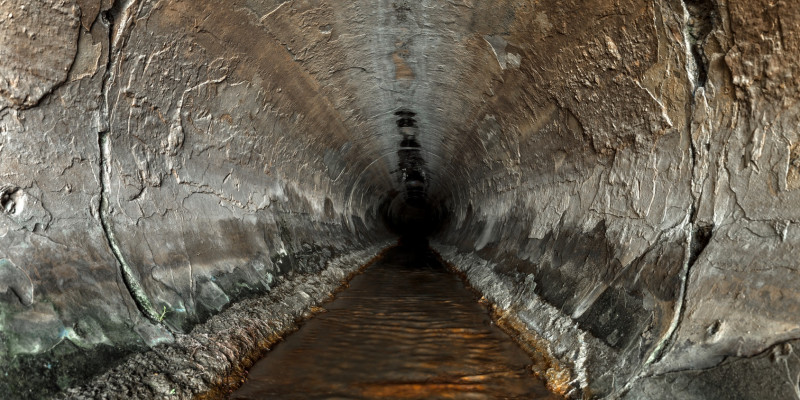The sewerage system in Germany exhibits major structural defects. Defects in liquid tightness can lead both to exfiltration, i.e. wastewater escaping from the sewer into the ground and groundwater, and to the infiltration (entry) of ground- and rainwater into the sewer. In a project commissioned by the Federal Environment Agency, scientists and sewage treatment plant and sewerage system operators investigated the infiltration issue and drew up recommendations for a holistic approach to sewer rehabilitation.
The water infiltrating leaking sewers, also referred to as “extraneous water”, can be many times larger in volume than the wastewater itself. This implies that sewers and house drains, whose actual function is to carry wastewater requiring treatment to sewage plants, acquire a drainage effect when they leak.
The impacts this has are multi-facetted. The dilution of the wastewater diminishes the removal efficiency of the sewage treatment plant and thus increases pollutant inputs into water bodies. The additional hydraulic load which the sewage plant must handle also affects its energy and cost efficiency, due to greater use of pumps and elevators for example. Infiltration water also places an additional burden on relief structures, which in combined sewer systems can, to some degree, act as a buffer for wastewater prior to treatment in the sewage plant during heavy rainfall events. They fill up more quickly and must discharge the wastewater into water bodies more frequently, thus relieving sewage plants through combined sewage discharges. This is another route by which untreated wastewater reaches water bodies.
The drainage effect attributable to leaking sewers can cause a local drop in the groundwater level, with risks to soil, buildings and vegetation. For example, soil material can be flushed into the sewers, leading to underground cavities with the possible consequence of roads collapsing and buildings settling. Deep-root plants such as trees can lose their natural connection to groundwater. The large-scale rehabilitation of sewers, on the other hand, can lead to a rise in groundwater levels which again has negative consequences for buildings and vegetation. Therefore, sewer rehabilitation measures must not only seal the sewers, but also take the hydraulic and geographical conditions in the area served by the sewage treatment plant into account.
The scientists working on the project also looked into the benefits which sewer rehabilitation has in terms of the reduction of infiltration water and examined the effects of rehabilitation measures on the efficiency (purification, energy, cost) of sewage treatment plants and relief structures and on groundwater levels. In addition, using the tool of eco-efficiency assessment, they determined the costs of specific sewer rehabilitation techniques on the basis of concrete case studies. Furthermore, the study was the first to examine the drainage effect of sewers on the local water balance (e.g. drop in the groundwater table due to drainage effect).
Based on the results, rehabilitation measures were proposed.
 Click to enlarge
Click to enlarge
